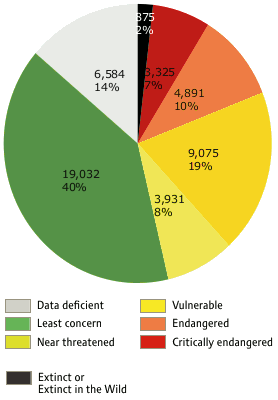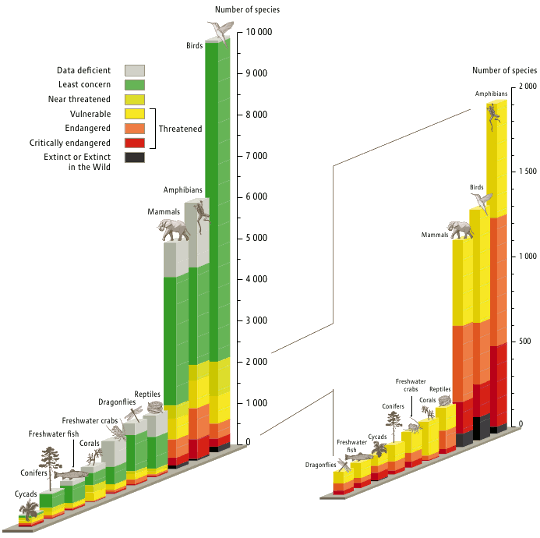Racism
 Image © Understanding Race Racism is the belief that characteristics and abilities can be attributed to people simply on the basis of their race and that some racial groups are superior to others. Racism and discrimination have been used as powerful weapons encouraging fear or hatred of others in times of conflict and war, and even during economic downturns.
Image © Understanding Race Racism is the belief that characteristics and abilities can be attributed to people simply on the basis of their race and that some racial groups are superior to others. Racism and discrimination have been used as powerful weapons encouraging fear or hatred of others in times of conflict and war, and even during economic downturns.
Racism is also a very touchy subject for some people, as issues concerning free speech and Article 19 of the Universal Declaration of Human Rights come into play. Some people argue that talking about supporting racial discrimination and prejudice is just words and that free speech should allow such views to be aired without restriction. Others point out that these words can lead to some very dire and serious consequences (the Nazi government policies being one example).
In a short introductory video the Understanding Race project from the American Anthropological Association says race is a powerful idea and an enduring concept, invented by society. It has also fostered inequality and discrimination for centuries, as well as influencing how we relate to other human beings.
Climate Change Affects Biodiversity
The link between climate change and biodiversity has long been established. Although throughout Earth’s history the climate has always changed with ecosystems and species coming and going, rapid climate change affects ecosystems and species ability to adapt and so biodiversity loss increases.
From a human perspective, the rapid climate change and accelerating biodiversity loss risks human security (e.g. a major change in the food chain upon which we depend, water sources may change, recede or disappear, medicines and other resources we rely on may be harder to obtain as the plants and forna they are derived from may reduce or disappear, etc.).
The UN’s Global Biodiversity Outlook 3, in May 2010, summarized some concerns that climate change will have on ecosystems:
Climate change is already having an impact on biodiversity, and is projected to become a progressively more significant threat in the coming decades. Loss of Arctic sea ice threatens biodiversity across an entire biome and beyond. The related pressure of ocean acidification, resulting from higher concentrations of carbon dioxide in the atmosphere, is also already being observed.
Ecosystems are already showing negative impacts under current levels of climate change … which is modest compared to future projected changes…. In addition to warming temperatures, more frequent extreme weather events and changing patterns of rainfall and drought can be expected to have significant impacts on biodiversity.
— Secretariat of the Convention on Biological Diversity (2010), Global Biodiversity Outlook 3, May, 2010, p.56
Some species may benefit from climate change (including, from a human perspective, an increases in diseases and pests) but the rapid nature of the change suggests that most species will not find it as beneficial as most will not be able to adapt.
Addressing Biodiversity Loss
 At the 1992 UN Conference on Environment and Development (the “Earth Summit”), the Convention on Biological Diversity (CBD) was born.
At the 1992 UN Conference on Environment and Development (the “Earth Summit”), the Convention on Biological Diversity (CBD) was born.
192 countries, plus the EU, are now Parties to that convention. In April 2002, the Parties to the Convention committed to significantly reduce the loss of biodiversity loss by 2010.
Massive Extinctions From Human Activity
Despite knowing about biodiversity’s importance for a long time, human activity has been causing massive extinctions. As the Environment New Service, reported back in August 1999 (previous link): “the current extinction rate is now approaching 1,000 times the background rate and may climb to 10,000 times the background rate during the next century, if present trends continue [resulting in] a loss that would easily equal those of past extinctions.” (Emphasis added)
A major report, the Millennium Ecosystem Assessment, released in March 2005 highlighted a substantial and largely irreversible loss in the diversity of life on Earth, with some 10-30% of the mammal, bird and amphibian species threatened with extinction, due to human actions. The World Wide Fund for Nature (WWF) added that Earth is unable to keep up in the struggle to regenerate from the demands we place on it.
The International Union for Conservation of Nature (IUCN) notes in a video that many species are threatened with extinction. In addition,
- 75% of genetic diversity of agricultural crops has been lost
- 75% of the world’s fisheries are fully or over exploited
- Up to 70% of the world’s known species risk extinction if the global temperatures rise by more than 3.5°C
- 1/3rd of reef-building corals around the world are threatened with extinction
- Every second a parcel of rainforest the size of a football field disappears
- Over 350 million people suffer from severe water scarcity
Is this the kind of world we want, it asks? After all, the short video concludes, our lives are inextricably linked with biodiversity and ultimately its protection is essential for our very survival:
In different parts of the world, species face different levels and types of threats. But overall patterns show a downward trend in most cases.

Proportion of all assessed species in different threat categories of extinction risk on the IUCN Red List, based on data from 47,677 species. Source: IUCN, pie chart compiled by Secretariat of the Convention on Biological Diversity (2010) Global Biodiversity Outlook 3, May 2010
As explained in the UN’s 3rd Global Biodiversity Outlook, the rate of biodiversity loss has not been reduced because the 5 principle pressures on biodiversity are persistent, even intensifying:
- Habitat loss and degradation
- Climate change
- Excessive nutrient load and other forms of pollution
- Over-exploitation and unsustainable use
- Invasive alien species
Most governments report to the UN Convention on Biological Diversity that these pressures are affecting biodiversity in their country (see p. 55 of the report).
The International Union for the Conservation of Nature (IUCN) maintains the Red List to assess the conservation status of species, subspecies, varieties, and even selected subpopulations on a global scale.
Extinction risks out pace any conservation successes. Amphibians are the most at risk, while corals have had a dramatic increase in risk of extinction in recent years.

Threat status of comprehensively assessed species by IUCN. Source: IUCN, compiled by Secretariat of the Convention on Biological Diversity (2010) Global Biodiversity Outlook 3, May 2010, p. 28 (visit for larger image)
The reasons vary from overuse of resource by humans, climate change, fragmented habitats, habitat destruction, ocean acidification and more.
Research of long term trends in the fossil record suggests that natural speed limits constrain how quickly biodiversity can rebound after waves of extinction. Hence, the rapid extinction rates mean that it could take a long time for nature to recover.
Consider the following observations and conclusions from established experts and institutions summarized by Jaan Suurkula, M.D. and chairman of Physicians and Scientists for Responsible Application of Science and Technology (PSRAST), noting the impact that global warming will have on ecosystems and biodiversity:
The world environmental situation is likely to be further aggravated by the increasingly rapid, large scale global extinction of species. It occurred in the 20th century at a rate that was a thousand times higher than the average rate during the preceding 65 million years. This is likely to destabilize various ecosystems including agricultural systems.
…In a slow extinction, various balancing mechanisms can develop. Noone knows what will be the result of this extremely rapid extinction rate. What is known, for sure, is that the world ecological system has been kept in balance through a very complex and multifaceted interaction between a huge number of species. This rapid extinction is therefore likely to precipitate collapses of ecosystems at a global scale. This is predicted to create large-scale agricultural problems, threatening food supplies to hundreds of millions of people. This ecological prediction does not take into consideration the effects of global warming which will further aggravate the situation.
Industrialized fishing has contributed importantly to mass extinction due to repeatedly failed attempts at limiting the fishing.
A new global study concludes that 90 percent of all large fishes have disappeared from the world’s oceans in the past half century, the devastating result of industrial fishing. The study, which took 10 years to complete and was published in the international journal Nature, paints a grim picture of the Earth’s current populations of such species as sharks, swordfish, tuna and marlin.
…The loss of predatory fishes is likely to cause multiple complex imbalances in marine ecology.
Another cause for extensive fish extinction is the destruction of coral reefs. This is caused by a combination of causes, including warming of oceans, damage from fishing tools and a harmful infection of coral organisms promoted by ocean pollution. It will take hundreds of thousands of years to restore what is now being destroyed in a few decades.
…According to the most comprehensive study done so far in this field, over a million species will be lost in the coming 50 years. The most important cause was found to be climate change.
…NOTE: The above presentation encompasses only the most important and burning global environmental problems. There are several additional ones, especially in the field of chemical pollution that contribute to harm the environment or upset the ecological balance.
— Jaan Suurkula, World-wide cooperation required to prevent global crisis; Part one— the problem, Physicians and Scientists for Responsible Application of Science and Technology, February 6, 2004 [Emphasis is original]
Additionally, as reported by UC Berkeley, using DNA comparisons, scientists have discovered what they have termed as an “evolutionary concept called parallelism, a situation where two organisms independently come up with the same adaptation to a particular environment.” This has an additional ramification when it comes to protecting biodiversity and endangered species. This is because in the past what we may have considered to be one species could actually be many. But, as pointed out by scientists, by putting them all in one group, it under-represents biodiversity, and these different evolutionarily species would not be getting the protection otherwise needed.

No comments:
Post a Comment